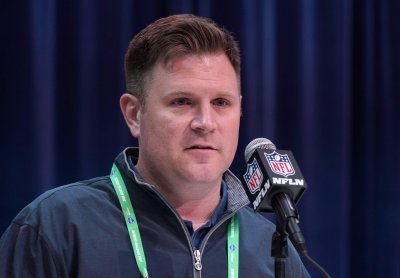The Packers Don’t Giveth, They Taketh Away
By dnicholson
For as long as Aaron Rodgers has been under center — rookie season notwithstanding — the Green Bay Packers have been a force.
Understandably, Rodgers is often the focus of most commentaries regarding the team. Almost any other Packers topic is drowned out, a standard not much different than the previous 15 years with Brett Favre at the helm.
But fans of the team know there’s plenty more to talk about than the majesty of Rodgers. That’s why we openly discuss the big picture (e.g. will Ted Thompson consider a balanced approach to team-building rather than a rigidly focused draft-and-develop philosophy?) as well as the small picture (e.g. how much does the team value Micah Hyde? What is Eddie Lacy’s future? Who are we excited about in the draft?).
So for this post I’d like to focus on a topic I’ve felt is generally under-appreciated: year in, year out the Packers are among the best in the league when it comes to turnovers. There are two sides of the coin, though, and it feeds back into the original premise — it’s hard not to pull Aaron Rodgers into the conversation.
Tom Brady is the only other quarterback in history who compare to Rodgers when it comes to throwing a high volume of touchdowns with almost no interceptions to speak of. That Green Bay is annually among the best in turnover differential has a lot to do with Rodgers’ uncanny efficiency.
The other side of the coin is that Dom Capers defenses — for all their foibles and the unanswered questions of whether the coordinator is a help or a hurt — are pretty damn good at taking the ball away.
Just look at the numbers.
Granted, the Packer defense started slow in 2016. Beset by a rash of injuries at cornerback, the slumping unit, on the heels of an embarrassing blowout loss to the Redskins, had just 10 takeaways through 10 games of football. Compare that to 16 giveaways on offense and it’s not hard in retrospect to understand Green Bay’s struggles in the win-loss column to that point.
Whatever switch flipped in Philadelphia the following week stayed flipped, and the Packers would cough it up just once over the final six games of the regular season — while registering 15 takeaways.
For all that’s been said, rightfully, about Jared Cook getting healthy and Ty Montgomery lifting the run game and Rodgers and Jordy looking like their old selves, the impact of turnovers on the team’s inspiring final stretch cannot be overlooked.
Green Bay would finish plus-8 in turnover differential, good for sixth in the league. The Patriots and Falcons ranked third and fourth, respectively. Turnovers may be difficult to project, but it’s clear that the teams that do well in that category are almost without exception playing for keeps in January and February.
To that end, Green Bay has a strong history over the past decade. As has been already said, Rodgers’ incomparable efficiency deserves credit. But what about Dom Capers?
It’s true that 2015 was a down year for the team statistically on both sides of the ball. Green Bay’s middle-of-the-Pack plus-6 turnover differential can’t be blamed on Rodgers throwing just eight INTs. But go back until 2009 when Capers came aboard, and the only other blip was 2013 — when Packers were reminded of what it looks like to see a quarterback throw interceptions as a broken collarbone sidelined Rodgers for seven games.
The 2013 season remains the only year during Capers’ tenure that the team had fewer takeaways than giveaways.
In 2014, Green Bay led the NFL with a plus-14 turnover differential and were excellent at turning the other team’s mistakes into points. The Pack scored 109 points off of 27 turnovers, effectively giving the team a touchdown per week off of turnovers. The 2012 unit forced a league-leading 31 interceptions, tied for the overall lead in total turnovers (38) and finished only behind the 49ers with a plus-24 TO differential. In 2010 they finished fourth in the league in differential and were second in the NFL in INTs. In 2009, the Packers were first in differential, posted a league-high 30 INTs and cashed in on those opportunities with the most points off turnovers (139).
When Green Bay is on top of things, like in the final six games of the season in 2016, the turnover battle pretty much informs their success. I understand this is Madden-esque analysis — the teams that don’t turn the ball over while taking it away from the other guys usually win games. Duh. But solve for just about any other variable and nothing seems equally important.
Playoff heartbreakers that wake us in a cold sweat from sleep, like the loss to the Giants in 2012 or the Cardinals in 2010, were defined by a typically efficient team suddenly screwing the pooch in the turnover category. The 2015 playoff loss in Seattle was largely a product of not doing enough with turnovers they forced.
Green Bay isn’t as prolific at takeaways as they once were, but it makes sense when you sprinkle in the losses of Sam Shields and future HOFer Charles Woodson — who twice led the league in picks with the Packers. In the six seasons Shields saw significant action — 2010 through ’15 — only Richard Sherman had more interceptions. Then there’s the loss of Casey Hayward, who had six INTs in his rookie season before injuries and inconsistency led to just three more over the next three seasons. To drive home the team’s bad luck at cornerback, Hayward led the league in INTs last season.
This all leads to the question: Who holds the Packers’ fate in this perennial area of strength? Rodgers for certain, but what about on defense? Ha Ha Clinton-Dix led the Pack with five INTs (and forced a fumble), and after that the only players with more than one pick were Micah Hyde (3), Damarious Randall (3 in 10 games) and Morgan Burnett (2).
Has Capers’ leadership as coordinator been the driving force behind the success? Is it personnel? My guess is it’s some combination of the two.
But a few things are certain. If Green Bay is going to stay at the top when it comes to the turnover battle, then the aforementioned have to keep it up — and players like Quinten Rollins and future draft picks have to find a way to contribute.
NFL Categories:













Comments (4)
PackerfanAuggie15
February 18, 2017 at 06:49 pm
Does anybody have stats on how many potential INTs were dropped? That seemed particularly bad this year.
PackerfanAuggie15
February 18, 2017 at 06:49 pm
Does anybody have stats on how many potential INTs were dropped? That seemed particularly bad this year.
Since'61
February 18, 2017 at 09:48 pm
During the Aaron Rodgers era the Packers usually win the TO battles because Rodgers doesn't turn the ball over very often via interceptions and the Packers do an excellent job of maintaining ball security when either their RBs or receivers are carrying the football. Then when they build a 2+ score lead they benefit from their opponents making mistakes trying to get back in the game quickly. That allows the pass rush to be effective and causes more frequent interceptions when they are not dropped. When an opponent can keep the game close and maintain a balanced attack is when we don't get enough turnovers and when it's scary to depend on the Packers defense to maintain a lead or hold an opponent down to allow a comeback. As long as our offense is playing at a high level and building leads our defense will get some TO's and usually over the course of a season it results in a plus ratio for the Packers. I don't think it's due to Capers or any players in particular because it's been true since 2009 and we've rotated plenty of defenders through the Packers defense during the last 8 seasons. However, the one constant has been the high level of play from Rodgers and the offense. Thanks, Since '61
Tundraboy
February 19, 2017 at 09:15 am
Exactly. Our turnovers happen usually when we are far ahead. That can not be. In tight games we need to be able to create them. This D is dysfunctional.